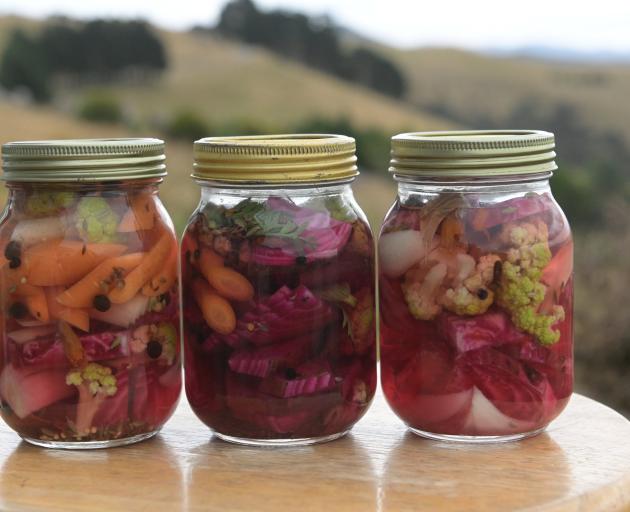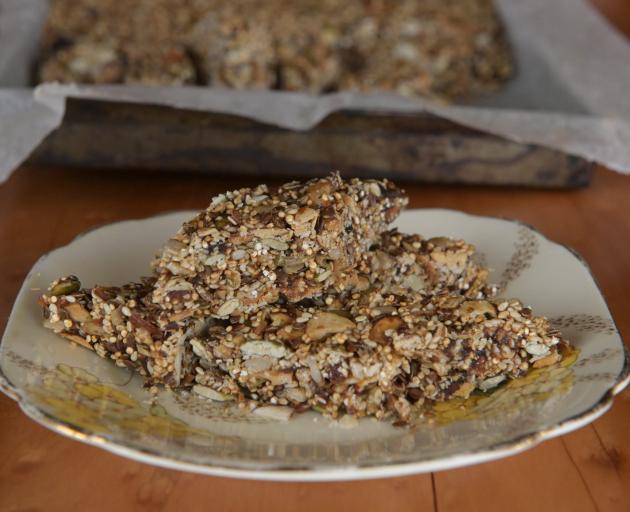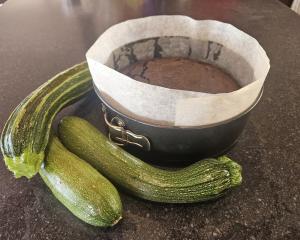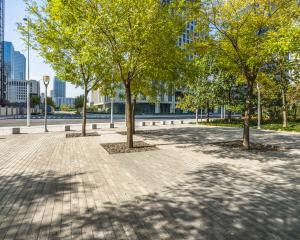
Sustainable gastronomy also leads to more healthy meals. Naturally, local produce is fresher and therefore more nutritious.
In the sustainable gastronomy kitchen we are conscious of energy use and the water we drink and use in cooking; all aspects of food consumption are considered and resolved to the best of our ability. I would like to see that happening in every home kitchen!
A commitment to sustainability can be hard going in a busy working city-life. Having a garden, even the smallest patch of salad greens and herbs, is a must. Shop at your local farmers market and stock an eco-pantry with your favourite whole-grains, dry beans, pulses, nuts and seeds.
Sustainable gastronomy fare is humble; we don't need to be fancy: let nature speak to us through simple flavours of steamed fresh produce or a green salad drizzled with olive oil.
The recipes I'm sharing here are ideal for using excess seasonal produce to bottle or keep in the fridge as condiments. The ratatouille works well paired with hummus on top of baked potatoes or sourdough bread, for example. The pickled vegetables will help maintain a healthy gut environment, and the quinoa bars are free of sugar and gluten.
Enjoy! - Hagar Ozri
Harvest ratatouille
Serves 4
½ cup sunflower oil
2 onions diced into 3cm pieces
4 garlic cloves
½ fresh chilli thinly sliced
2 red peppers diced into 3cm pieces
4 small zucchinis (a mix of yellow and green)
½ large aubergine peeled and diced into 3cm pieces
200g green beans
2 medium tomatoes chopped (and peeled-optional)
1Tbsp tomato puree
200ml water
Chopped coriander to garnish (or parsley if preferred)
Salt and pepper
Method
Prepare all the vegetables ahead of time.
Put half of the oil (¼ cup) into a medium size pot and place on a medium-high heat. Add onions and fry for 5 minutes, stirring occasionally. Stir in the garlic, chilli and red peppers and fry for another 5 minutes. With a slotted spoon scoop out the vegetables from the pot into a medium bowl and set aside, add the remaining oil and vegetables - green beans, aubergine and zucchinis - into the pot and fry for 5 minutes, stirring occasionally.
Return the vegetables from the bowl to the pot, add the tomatoes, tomato puree and plenty of salt and pepper. Stir well then add the water to the pot to half cover the vegetables; be careful of splatter. Cover with a lid and simmer gently for 30 min. Taste and add more salt if needed.
Serve on your choice of whole grain and garnish with chopped fresh coriander.
 Pickled vegetables.
Pickled vegetables
Pickled vegetables.
Pickled vegetables

2 large raw organic beets
1 medium head of cauliflower
Or any vegetable of your choosing, such as carrots, broccoli, onion, garlic for example.
3 Tbsp of pickle juice from a commercial or homemade sauerkraut
½ tsp natural sea salt
Filtered water or spring water.
Method
Wash your vegetables of choice and cut into 2.5cm inch cubes.
Place your vegetables in a large mouth jar, add the pickle juice and the water leaving 5cm of space between the top of the liquid and the lid.
Keep at room temperature for three to five days.
Keep the lid tightly closed but open to release pressure daily. If froth or scum forms on the top simply remove it. When the pickled vegetables are ready (a good sign is bubbles coming up to the top and a taste test) place in the fridge to stop the fermentation process.
 Quinoa bars.
Quinoa bars
Quinoa bars.
Quinoa bars

1 cup chopped almonds
½ cup raw quinoa, rinsed
¼ cup raw pumpkin seeds
¼ cup raw sunflower seeds
1 cup dried tart cherries
2 Tbsp brown rice syrup
¾ tsp salt
Turn oven to 100degC.
Method
Toast almonds, quinoa, pumpkin and sunflower seeds in the oven and let cool. Process cherries, brown rice syrup, salt and 2 tablespoons of water in a food processor until smooth. Transfer into a bowl and stir in almond mixture. Press firmly into lined pan and bake for 20-25 minutes until no longer sticky.
Cut while hot.
When cooled store in an airtight container.
Cooking classes and events
Gluten-free and sugar-free cooking class, April 7, 5pm at The Valley Project rooms.
Sustainable gastronomy dinner, Saturday, April 26, 6pm, Macandrew Bay Community Hall, Dunedin.
Organic NZ Week dinner, Friday, May 3, 6pm, Otago Women’s Pioneer Hall, Moray Pl.
For more on tickets and future events go to www.hagarozri.co.nz.
Radio show
‘‘Sustainable Gastronomy With Hagar Ozri The Organic Cook’’, Tuesdays at 10am, on OAR Dunedin Community Radio 104.5 FM.












